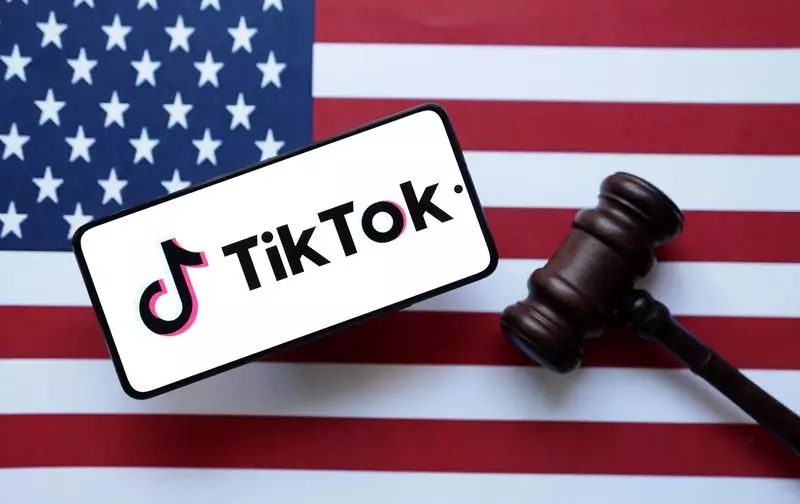In a dramatic shift for the social media landscape, TikTok faced an unforeseen operational halt for 170 million American users following a U.S. Supreme Court ruling. This decision not only put the app’s viability on the line but also triggered a series of implications spanning user access, advertising strategies, and even international relations. This article delves into the ramifications of this ban, exploring the future of TikTok in a rapidly evolving digital ecosystem.
The Supreme Court’s recent decision marked a pivotal moment in the ongoing scrutiny of TikTok and its parent company, ByteDance. Rooted in national security concerns, the ruling stemmed from a legislative measure passed in 2024, which mandated that ByteDance either divest its ownership of TikTok or face a complete shutdown in the United States by January 19. With President-elect Donald Trump indicating a desire to seek a “political resolution,” uncertainty looms over the app’s future and operational status. The immediate fallout was swift; new users found themselves unable to download the app, and existing users could no longer update it, given the legal restrictions placed upon app stores.
More alarmingly, TikTok’s operational capabilities took a significant hit, leaving its 170 million users in the dark. Attempts to access the application through Virtual Private Networks (VPNs) yielded no success, forcing content creators and users alike to consider alternatives. This acute disruption illustrates just how quickly shifts in legal frameworks can redefine the landscape of popular digital platforms.
User Experience and Alternatives
For TikTok devotees, the suspension of services represents more than just an app becoming inaccessible; it signifies a rupture in their digital communities and content ecosystems. Content creators, who have cultivated significant followings and built entrepreneurial ventures on the platform, scrambled to direct their audiences toward other platforms like Instagram and YouTube. The loss of TikTok’s user-friendly content creation tools and vast outreach capabilities could render many creators vulnerable.
Moreover, with the uncertainty regarding the app’s future, users began to explore alternative platforms, such as RedNote, that could potentially fill the void left by TikTok. The shift not only affects personal connections among users but could also lead to a broader migration pattern among social media platforms, complicating the landscape for both users and marketers alike.
The advertising world braced for an upheaval as celebrities and brands rushed to prepare contingency plans in light of the impending ban. With TikTok representing a channel that secures over $11 billion in annual U.S. ad investments, the rapid shift created a sense of urgency among marketing executives. These advertisers, often relying on TikTok’s distinct format and engagement metrics, found themselves in a “hair on fire” scenario as they scrambled to reallocate budgets and strategies.
Despite attempts by TikTok to reassure advertisers through new features aimed at streamlining ad management, the uncertainty surrounding the app has left many marketers reassessing their strategies. This situation illustrates the significant interplay between social media platforms and advertising efforts, with traditional players like Meta and Snap poised to benefit as brands migrate their marketing dollars elsewhere.
The implications of a TikTok ban extend far beyond domestic borders, touching on the fragile state of U.S.-China relations. With TikTok often cited as a symbol of broader tensions between the two nations, the ban could exacerbate an already strained trade relationship. Analysts suggest that the ban has been a consideration for some time, indicating a critical backdrop of ongoing geopolitical disputes.
Trump’s potential options for mitigating the ban, specifically considering executive actions to safeguard TikTok during his presidency, could serve as a double-edged sword. On one hand, it could offer some protection for the app’s U.S. operations; on the other, it may foster further negotiations with China, as the risk of a ban could be leveraged for more favorable trade terms.
Future Prospects and Ownership Changes
As discussions regarding the sale of TikTok’s U.S. operations continue, speculation surrounding potential buyers circulates. While TikTok has steadfastly maintained that its sale is not an option, figures such as billionaire Frank McCourt and even Elon Musk have emerged as potential suitors. Such possibilities represent a shifting dynamic in digital asset ownership, where high-profile billionaires may attempt to negotiate terms that align with their political and financial interests.
In the wake of the ban, TikTok’s strategies and future direction remain uncertain. The interplay of user engagement, advertising dynamics, and international politics creates a multifaceted scenario that risks reshaping the digital marketplace profoundly. As stakeholders prepare for the potential fallout, the world becomes increasingly aware of the intricate ties between social media platforms and wider socio-economic implications.

